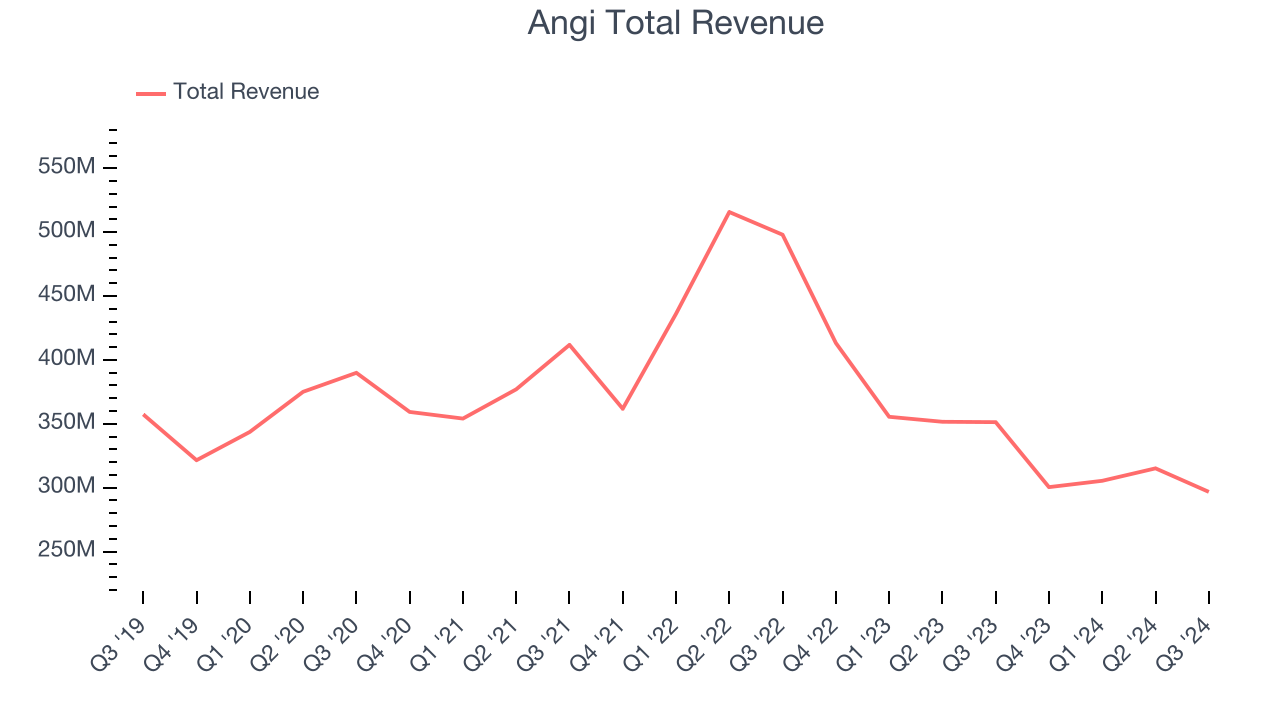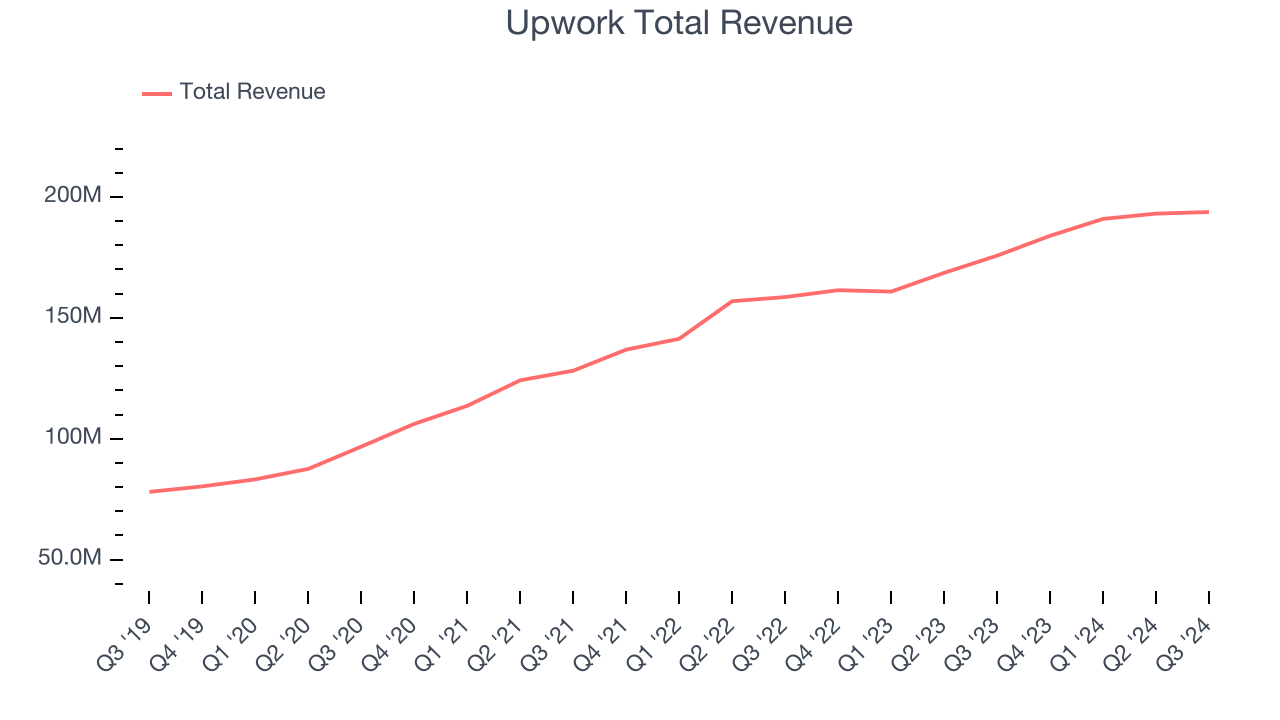Gig Economy Stocks Q3 Teardown: Angi (NASDAQ:ANGI) Vs The Rest

Quarterly earnings results are a good time to check in on a company’s progress, especially compared to its peers in the same sector. Today we are looking at Angi (NASDAQ: ANGI) and the best and worst performers in the gig economy industry.
The iPhone changed the world, ushering in the era of the “always-on” internet and “on-demand” services - anything someone could want is just a few taps away. Likewise, the gig economy sprang up in a similar fashion, with a proliferation of tech-enabled freelance labor marketplaces, which work hand and hand with many on demand services. Individuals can now work on demand too. What began with tech-enabled platforms that aggregated riders and drivers has expanded over the past decade to include food delivery, groceries, and now even a plumber or graphic designer are all just a few taps away.
The 6 gig economy stocks we track reported a strong Q3. As a group, revenues beat analysts’ consensus estimates by 3% while next quarter’s revenue guidance was 1.6% above.
In light of this news, share prices of the companies have held steady as they are up 3.5% on average since the latest earnings results.
Weakest Q3: Angi (NASDAQ: ANGI)
Created by IAC’s mergers of Angie’s List and HomeAdvisor, ANGI (NASDAQ: ANGI) operates the largest online marketplace for home services in the US.
Angi reported revenues of $296.7 million, down 15.5% year on year. This print was in line with analysts’ expectations, but overall, it was a mixed quarter for the company with a solid beat of analysts’ EBITDA estimates but a decline in its requests.

Angi delivered the weakest performance against analyst estimates and slowest revenue growth of the whole group. The company reported 4.49 million service requests, down 26% year on year. Unsurprisingly, the stock is down 25.1% since reporting and currently trades at $1.97.
Read our full report on Angi here, it’s free.
Best Q3: Upwork (NASDAQ: UPWK)
Formed through the 2013 merger of Elance and oDesk, Upwork (NASDAQ: UPWK) is an online platform where businesses and independent professionals connect to get work done.
Upwork reported revenues of $193.8 million, up 10.3% year on year, outperforming analysts’ expectations by 5.3%. The business had a very strong quarter with EBITDA guidance for next quarter exceeding analysts’ expectations.

Upwork scored the highest full-year guidance raise among its peers. The company reported 855,000 gmv, up 2.3% year on year. The market seems happy with the results as the stock is up 6.8% since reporting. It currently trades at $15.59.
Is now the time to buy Upwork? Access our full analysis of the earnings results here, it’s free.
Uber (NYSE: UBER)
Born out of a winter night thought: "What if you could request a ride from your phone?" Uber (NYSE: UBER) operates a global network of on demand services, most prominently ride hailing and food delivery, and freight.
Uber reported revenues of $11.19 billion, up 20.4% year on year, exceeding analysts’ expectations by 1.9%. It was a a satisfactory quarter as it also posted a decent beat of analysts’ EBITDA estimates.
As expected, the stock is down 12.4% since the results and currently trades at $69.65.
Read our full analysis of Uber’s results here.
Lyft (NASDAQ: LYFT)
Founded by Logan Green and John Zimmer as a long-distance intercity carpooling company Zimride, Lyft (NASDAQ: LYFT) operates a ridesharing network in the US and Canada.
Lyft reported revenues of $1.52 billion, up 31.5% year on year. This print beat analysts’ expectations by 5.7%. It was a very strong quarter as it also recorded an impressive beat of analysts’ EBITDA estimates and solid growth in its users.
Lyft scored the biggest analyst estimates beat and fastest revenue growth among its peers. The company reported 24.4 million users, up 8.9% year on year. The stock is up 13.6% since reporting and currently trades at $16.36.
Read our full, actionable report on Lyft here, it’s free.
Fiverr (NYSE: FVRR)
Based in Tel Aviv, Fiverr (NYSE: FVRR) operates a fixed price global freelance marketplace for digital services.
Fiverr reported revenues of $99.63 million, up 7.7% year on year. This result topped analysts’ expectations by 3.4%. Overall, it was a very strong quarter as it also produced an impressive beat of analysts’ EBITDA estimates.
Fiverr had the weakest full-year guidance update among its peers. The company reported 3.77 million active buyers, down 9.4% year on year. The stock is up 27% since reporting and currently trades at $31.85.
Read our full, actionable report on Fiverr here, it’s free.
Market Update
The Fed’s interest rate hikes throughout 2022 and 2023 have successfully cooled post-pandemic inflation, bringing it closer to the 2% target. Inflationary pressures have eased without tipping the economy into a recession, suggesting a soft landing. This stability, paired with recent rate cuts (0.5% in September 2024 and 0.25% in November 2024), has fueled a strong year for the stock market in 2024. The markets surged further after Donald Trump’s presidential victory in November, with major indices reaching record highs in the days following the election. Still, questions remain about the direction of economic policy, as potential tariffs and corporate tax changes add uncertainty heading into 2025.
Want to invest in winners with rock-solid fundamentals? Check out our Strong Momentum Stocks and add them to your watchlist. These companies are poised for growth regardless of the political or macroeconomic climate.
Join Paid Stock Investor Research
Help us make StockStory more helpful to investors like yourself. Join our paid user research session and receive a $50 Amazon gift card for your opinions. Sign up here.
More News
View More




Recent Quotes
View More
Quotes delayed at least 20 minutes.
By accessing this page, you agree to the Privacy Policy and Terms Of Service.